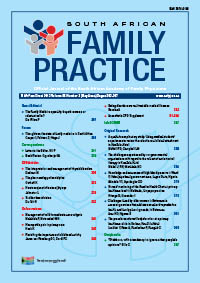Is blood pressure measurement important in children?
Keywords:
blood pressure measurement, children
Abstract
The importance of blood pressure (BP) monitoring in the perioperative and intensive care setting is very clear. Data from adult and paediatric victims of trauma have suggested that systolic blood pressure (SBP) is a predictor of mortality. In many other settings, the mean arterial pressure (MAP) has been used as a surrogate for tissue perfusion1 and cardiac output (MAP = cardiac output x systemic vascular resistance). Routine monitoring of BP has thus been set as one of the recommended standards of care by the American Society of Anesthesiologists (ASA).1 Paediatric anesthesiologists routinely monitor the BP of their patients and make major diagnostic and therapeutic decisions, e.g. blood transfusion and the commencement of inotropes and resuscitation, based on deviations from “normal”. However, there is a large variation in the threshold values that are used to define hypertension and hypotension. Standard BP tables use values that are obtained in the awake, unanaesthetised child. They do not take into account such variables as anxiety, the effects of anaesthetic agents on organ flow, and changes in metabolism, temperature and surgical stress.2 This is further confounded by the fact that these devices may not have been adequately validated for use in the paediatric population. The following is a brief discussion on the controversies that exist.
Section
Anaesthetic Supplement
By submitting manuscripts to SAFP, authors of original articles are assigning copyright to the South African Academy of Family Physicians. Copyright of review articles are assigned to the Publisher, Medpharm Publications (Pty) Ltd, unless otherwise specified. Authors may use their own work after publication without written permission, provided they acknowledge the original source. Individuals and academic institutions may freely copy and distribute articles published in SAFP for educational and research purposes without obtaining permission.

